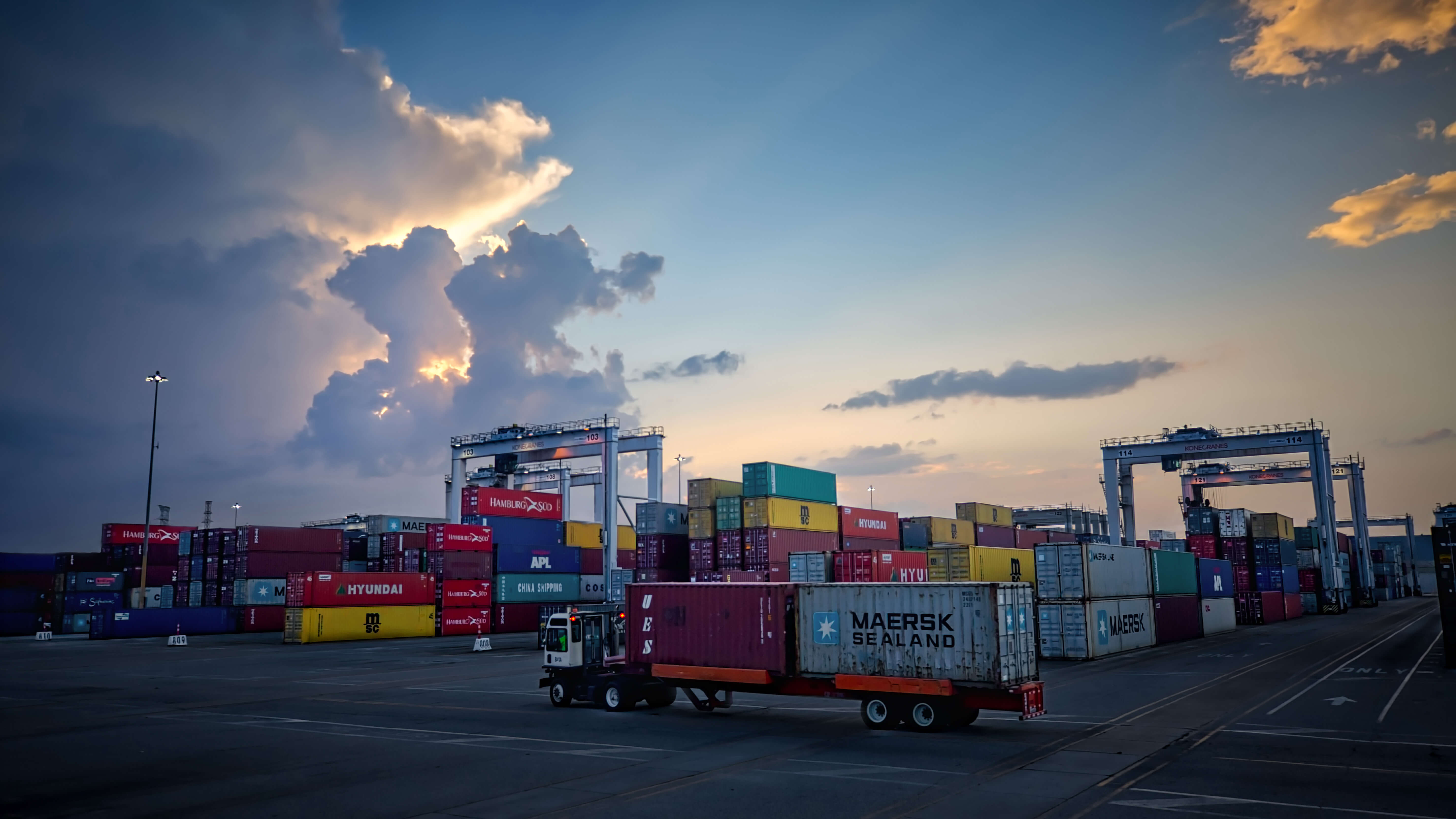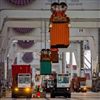While the Georgia Ports Authority has five terminals, its container operation is handled in a single yard at the Garden City Terminal, the largest in the Western Hemisphere. For the first time ever, that terminal is expected to surpass 4 million twenty-foot equivalent container units this fiscal year (July 1, 2017 – June 30, 2018). Garden City Terminal has 26 ship-to-shore cranes working nine vessel berths on nearly 10,000 contiguous feet of berth space, and 146 rubber-tired gantry cranes spread throughout the 1,200-acre facility. The terminal’s 48 truck lanes ensure cargo fluidity.
Presently, the logistics industry finds itself in an age when not only are ship sizes growing, the speed at which they are growing is accelerating. In July 2016, the first 10,000-TEU ships began calling Garden City Terminal. In May 2017, 13,000+ TEU ships started calling, and a 14,000 TEU ship will call this August.
In the span of just one year, GPA’s average exchanges per vessel have jumped dramatically. Big ships mean even bigger move counts, and the GPA has taken the necessary steps to better accommodate Neopanamax vessels. Garden City Terminal now employs six Neopanamax cranes to work a single 13,000-TEU ship. That size ship on average requires 5,500 container moves, at 220 net berth moves/hour – all while seven other ships are being worked concurrently at the same terminal. A single terminal design makes this routine.
The ongoing Savannah Harbor Expansion Project will deepen the harbor to 47 feet (54 feet at high tide) by 2021. Deeper water will allow Neopanamax vessels to call on Savannah and other gateway ports with heavier loads and greater scheduling flexibility.
Ports, however, cannot solely focus on deeper water when preparing for bigger ships. Landside infrastructure is just as critical. A key and growing component to this should be rail. On-terminal rail in particular offers huge efficiencies. The Port of Savannah has two on-terminal rail yards served by Norfolk Southern and CSX. Through rail expansion, the port is positioning itself to rapidly increase service to an arc of inland markets, from Atlanta to Memphis, St. Louis, Chicago and the Ohio Valley.
Key to expanding rail service at Garden City Terminal is a $128 million project – funded in part by a $44 million FASTLANE Grant administered by the Maritime Administration. Set for completion in 2020, the expansion will double rail lift capacity at Garden City Terminal to 1 million containers per year. Greater unit train capacity on terminal will build density into the system, and enable faster, more frequent rail service to markets along the Mid-American Arc.
Large on-terminal investment is critical toward building a basis for future growth. But ports must also keep attention focused on what happens beyond the gates. The needs of motor carriers and strategies to reduce off-terminal congestion are a key part of port planning and operations. Rail plays a role here as increased reliance on intermodal transit means less road congestion. However, to enable maximum efficiency of port operations, states must also get onboard with necessary improvements to roads and highways.
To ensure road fluidity, the state of Georgia is building a cargo beltway. As part of a major initiative to improve and expand surface transportation across Georgia, the state opened the Jimmy Deloach Connector in 2016, providing direct truck access between the Port of Savannah and Interstate 95. The connector carries 5,000 trucks per day, and cuts 11 minutes from the drive time between the port and the interstate.
Within the next five years, Georgia’s freight mobility plan will have delivered the Brampton Road Connector, linking Garden City Terminal to I-516, and will have extended the Jimmy Deloach Parkway from I-95 to I-16. This will form a complete cargo beltway for motor carriers between the port and the interstate network.
The infrastructure improvements are part of GPA’s investment philosophy of maintaining capacity at least 20 percent above current demand. Additional rail infrastructure, yard space, and truck gates, as well as more container handling cranes, and ship-to-shore cranes, will help Savannah maintain high levels of service without congestion, even as it increases business and market share.


